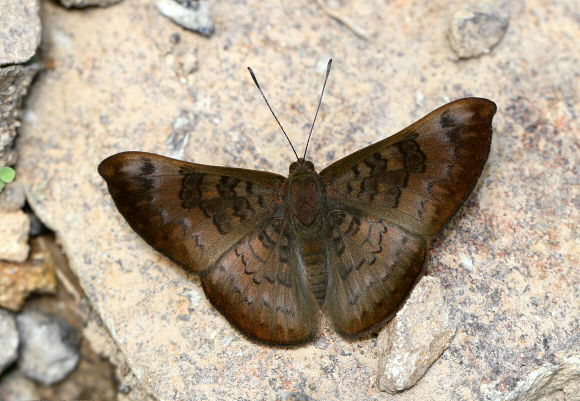 Emesis tegula, Medellin, Colombia – Adrian Hoskins
Emesis tegula, Medellin, Colombia – Adrian Hoskins
Introduction
The distinctive wing pattern and shape of Emesis make them instantly recognisable as a genus, but some of the 41 species can be difficult to tell apart, requiring close examination of the markings.Only 4 Emesis species have a falcate apex to the forewings – angularis, sinuata, tegula and tenedia. The first two have an angular tornus on the hindwings, narrowing the identification of the illustrated insect to two near-identical ‘sister’ species tegula and tenedia. Both are subject to variation in their markings, and their distribution ranges overlap, so it can sometimes be difficult to tell them apart, but tegula tends to have more conspicuous dark bands.
Emesis tegula is a largely Central American species found from Mexico to Colombia.
Habitats
This species occurs in primary and secondary forest, at elevations between about 100-900m.
Lifecycle
The eggs of Emesis species are typically white and highly sculptured. They are laid singly or in clusters of up to 30, according to species. The known larval foodplants encompass the families Ranunculaceae, Euphorbiaceae, Rhizophoraceae, Sterculiaceae, Anacardiaceae and Nyctaginaceae.
Adult behaviour
Males are usually encountered as singletons amongst multi-species aggregations of mud-puddling butterflies. Females never mud-puddle, but can sometimes be found basking on foliage in light gaps in the forest.
